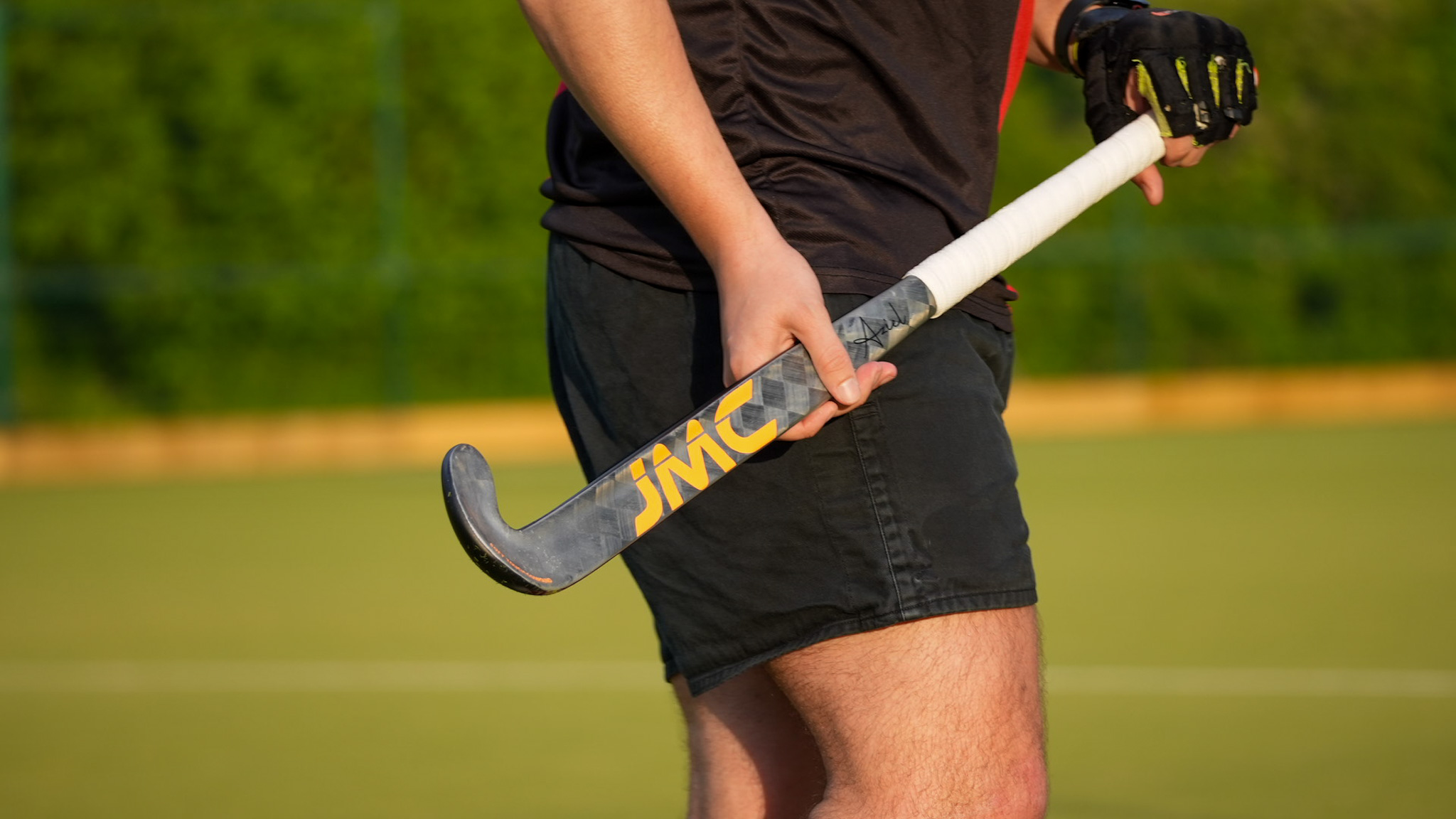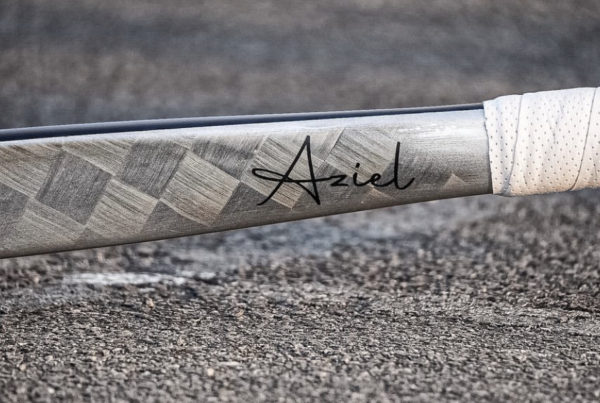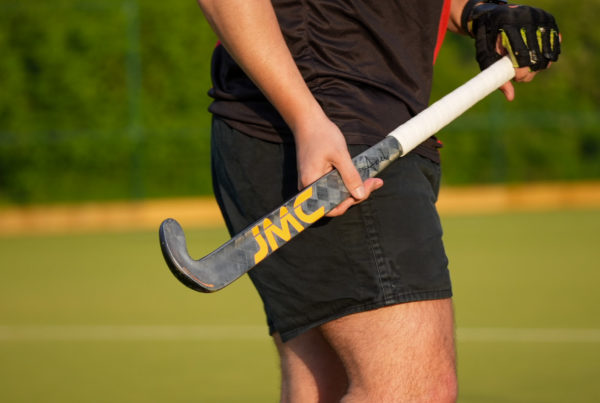The Importance of the First Touch at All Levels of Hockey
Few things can dictate your individual game more than the quality of your first touch. If it’s perfect, then it keeps the ball close and, in a position, you want it, well, then you’ve got nothing to worry about. You’ve got time for a quick glance, or to set yourself to move the ball on, or take on a player. On the opposite end of the scale, the ball could take a nasty bounce off your stick, taking the ball away from you, either to the opposition, or to an area where you are having to scramble after the ball, which means all your composure is gone. For most people, their first touch in a game will start nearer the first scenario, then the more fatigued they get, the likelihood of the latter increases.
So, what can we do to increase the odds of our first touch being a positive one, one which our teammates can see and builds trust that passing to you is a good option?
Step 0.5: Pre-scan
Before you even get ready to receive the ball, you’ve got to know what’s going on on the pitch. There is no point shouting for a pass if you’ve got a defender right on your heels, itching to intercept you. Further, once you’ve got the ball, you want to know whether you’re receiving the pass as part of a constructed attacking movement, or a scrambled pass after relieving the opposition of the ball. Finally, it’s good to have in the back of your mind where everybody on the pitch roughly is. Got a nice mental map? Now forget about it (just for a moment, anyway).
Step 1: Focus on the task at hand.
One of the biggest mistakes players make when about to receive a pass is trying to think about what they are going to do once they’ve got the ball. From defenders trying to carry out passing around the back, to midfielders trying to turn strong before the ball has even arrived at their feet, to wingers working out which 3D-skill they are going to use which they just saw on TikTok, to forwards counting the number of goals they’ve scored before the ball is halfway towards them. It is very easy to get caught up in the game and forget to focus on the moment. The ball is coming towards you. Do the first bit right, get the ball in a strong good position and under control, then you can nutmeg to your hearts content.
Step 2: Know when to meet the ball.
This is one of the key skills that makes the difference between hockey players and great hockey players. If you’re in open space with no defenders around you, you are going to hope, possibly even expect that your teammate passes the ball for you to run on to. But those occasions are rare and may only come up once in a game, if you’re lucky. Far more often you will need to check your surroundings, cut back and come towards the ball. Regardless of whether you are moving forward or coming to the ball, you always want to be moving when you pick up the ball. The simplest form of movement for receiving a pass is moving in a straight line towards the ball. This massively reduces the chances of the opposition intercepting the pass, as well as increases the likelihood of your team regaining possession of the ball. For forwards it may feel counterintuitive, but that’s why we have the pass and go rule. Once you’ve got the ball with your back to goal, release to a player in front of you (who is themselves facing towards the goal), then turn and run back towards the goal at a different angle, if you pick up the ball running vertically down the pitch, pass to your player, then wheel off to the left in a large C shape. This forces the defenders on the opposition to come with you, creating space on the pitch where it didn’t exist before. And if they don’t follow you? Great! You can have the ball back, but this time you’re facing goal and can drive the attack.
Step 3: Set your feet.
Such a simple idea but can be game changing. If I am counterattacking and am picking the ball up with space to drive in to, I do not want to be receiving the ball with my entire body facing the wrong direction. Try and get used to setting your body at a 45-degree angle to the direction you want to go. If you are receiving a ball from the centre spot and you are vertical to the player, you want to be moving in a diagonal direction, feet facing forward, body turned at the hips to receive the ball in a positive position.
Step 4: Get low, or don’t – recognise the pass.
Another simple concept, but if a ball is coming in hard and low, you want to get as much surface of the stick down as possible. Physically this will reduce the impact, as some of it is deferred through the stick into the ground – don’t believe me? try it. Try receiving a hit pass with just the end of your stick, and then again with a flat stick. The difference it makes is real. On the other hand, if you’re receiving a bouncing pass (or playing on a rubbish pitch), you want to get your stick vertical, out in front of you, with your legs behind the stick. Worst case scenario it misses your stick and hits your legs, and you give away a free hit, but you’re doing so in a controlled way, where the defender has to come and get the ball from you to be able to take the free hit. You’re far better off doing this than letting the ball go straight to the opposition and allow them to counterattack with you facing the wrong way.
Step 5: Soft hands
When it comes to receiving the ball, especially if it’s been hit with power, the last thing you want to do is rigidly put your stick out to meet the ball, as it will just bounce off it. Instead, you want to try and put your stick out to meet the ball, then just as it makes contact – bring your stick back in the direction the ball is coming from, or at an angle roughly 45 degrees from the direction it is coming from. This way you will minimise the chance of the ball bouncing away.
What else can I do?
If you have tried each of the above steps and are still finding the ball careens off of your stick like they’ve let me back on the golf course and I’m trying to tee off with a 3-wood and I don’t even know what golf is, then it may be the equipment you are using. Just like me getting banned from my local golf course for using a hockey stick instead of a putter, you’ve got to use the right tool for the occasion. It is very tempting to get a high carbon stick because it’s what the pro’s play with, and they translate a lot of power from hits, and have the sexy designs and names, but the higher your carbon content, the more rigid the stick is going to be and the less forgiving it is going to be when it comes to your first touch, so “learn your carbon” and understand the characteristics these various carbon composites and how they are applied to sticks can change the way you feel the ball. And trust me, in any game scenario, it doesn’t matter where you play on the pitch, you are going to have to receive passes a LOT more than you are going to be free on top of the D to hammer one in top bins. Besides, how are you going to even get in a position to put one away like that when every time you try and stop the ball you give it to the opposition? I’ve been playing as a forward for 8 years and most of the touches I make in game are with my back to the opposition goal when we are in an attacking transition. It’s my job to control a wild fast pass, then lay it off to a runner and then get myself into a goalscoring position. As a forward, you know that everything has to go right for you to even get a chance at putting the ball in the net.
Blog Author: “Finickiest”





